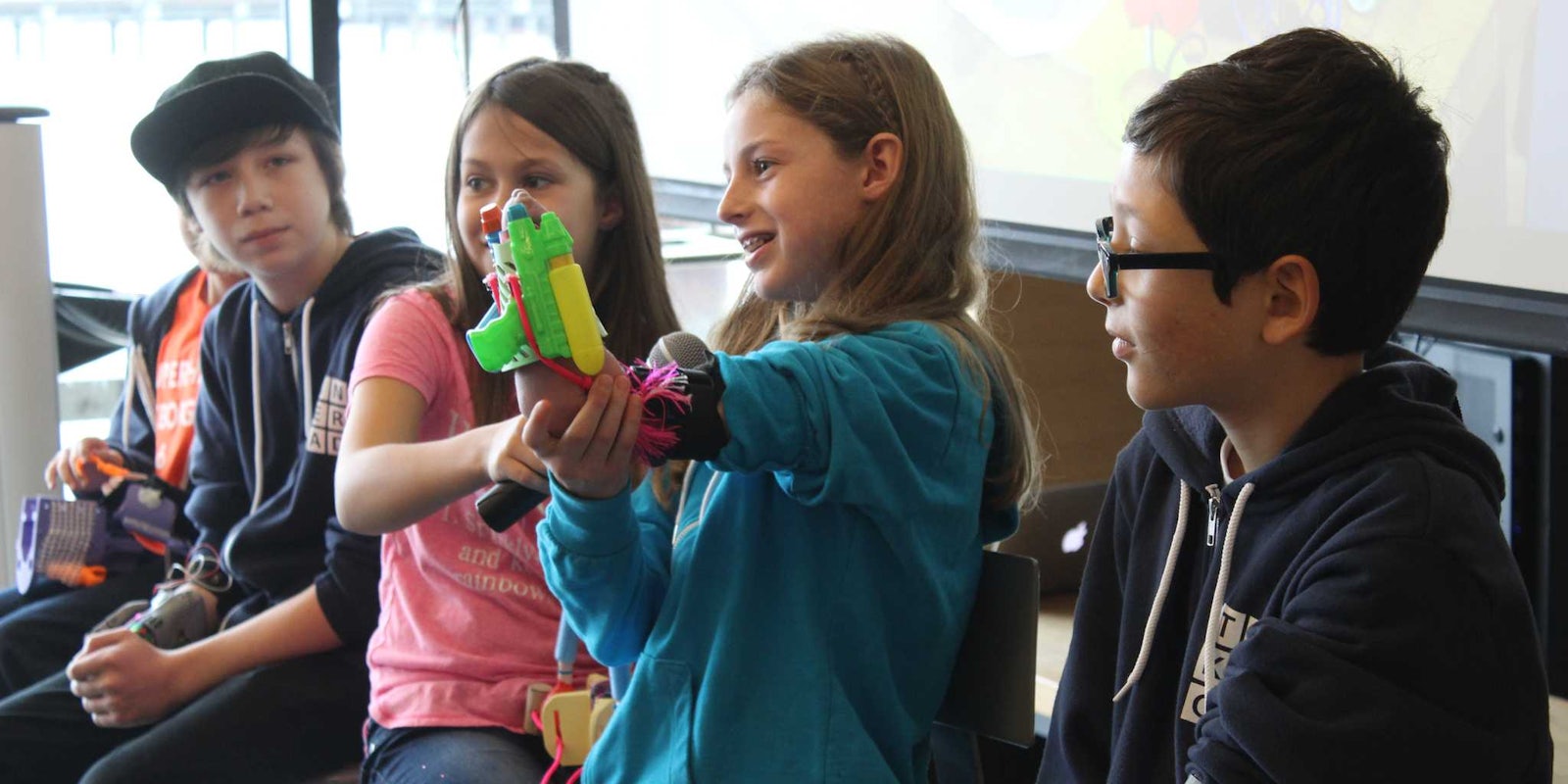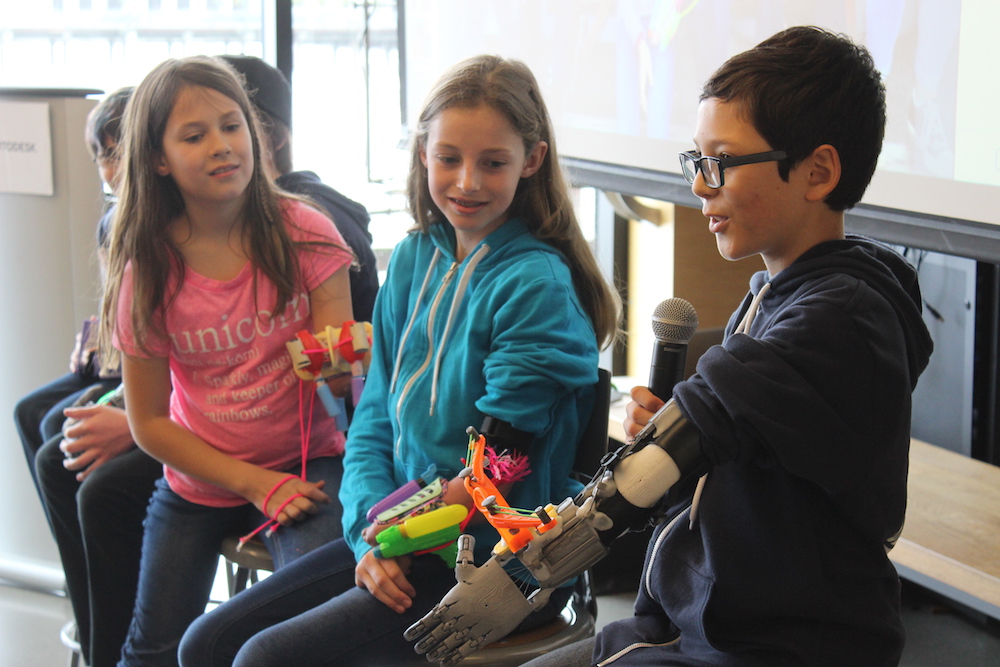What kind of superpowers do children create when given the tools and materials to make it possible? KIDMob, a Bay Area-based design education nonprofit, found out when they brought together six students with upper limb differences to create superhero prosthetics.
The Superhero Cyborgs event was hosted by Autodesk in San Francisco, and the students from all over the U.S., ages 10 to 15-years-old, converged on the design and manufacturing tools to make their imaginations come alive. The five-day program culminated in the creation of prosthetic attachments that shoot glitter, can be modified with different video game inspired attachments, and light up with LED lights and other electronics.
“Particularly with prosthetics for kids on the market today, my understanding is that they can be somewhat limited in terms of functionality, or super expensive, so I think part of it is giving kids another alternative and they realize they can have an impact and have valid ideas and can create for themselves,” Kate Ganim, cofounder of KIDMob said in an interview with the Daily Dot. “They’re the ones that know their needs the best.”
There are a handful of organizations that aim to make prosthetics more accessible, especially for young people. Enable, for instance, open-sources the design and manufacturing of prosthetics through a network of volunteers, and the IKO Creative Prosthetic System is compatible with Lego and helps children create their own limbs.
KIDMob usually works on projects on a community scale—Ganim said this summer they worked to build a youth hub with students in the Philippines. But with support from organizations including Autodesk, the Helping Hands Foundation, and California College of the Arts that donated computers, 3D scanners and other hardware, they were able to host their second Superhero Cyborgs event in the Bay Area with a small group of individuals.
On the first day, the students got an overview of the design process, and used 3D design and printing tools, going hands-on with Tinkercad, a simple 3D design tool. The next day, students took plaster casts of their limbs and used the scanners to create models of their upper limbs. The students 3D-printed custom cuffs to see how the technology worked, and then were tasked with coming up with project ideas to turn themselves into superheroes.
The rest of the time was spent working on prototypes, and, like other hackathons, the students got up in front of 100 adults to demonstrate their creations.
Jordan, a 10-year-old girl, created a glitter cannon “to spread glitter and cheer into the universe.” Riley, 10, was inspired by the Assassin’s Creed video game series and modified his prosthetic to be stronger and ultimately support a library of attachments, the first one being a toy bow and arrow. David, a 13-year-old from rural Indiana, attended the event with the goal of improving grip and strength so he could participate in barrel racing with his friends and built a modular attachment to hold a Nerf gun.
The designs are just prototypes, but each student was paired up with a designer to help them continue the process. As Autodesk’s Sarah O’Rourke explained, the students and their designer buddies will work on building more robust super powers through one-on-one mentoring sessions via FaceTime and video chatting. Though the kids won’t come back to Autodesk, their inventions will hopefully progress apace.
There are no plans for a third Superhero Cyborgs event, yet. Ganim said that because there isn’t a density of children with upper limb differences, these events require traveling to host, and can be cost-prohibitive. KIDMob provided financial support for travel and housing expenses for a few of the participants.
The success of this event, however, has sparked interest from others who want to help support children to create their own 3D-printed prosthetics with super-human enhancement.
“There’s this amazing moment at the end of the workshop before the presentations where the kids are just cranking on their projects, they know what they need to do,” Ganim said. “Going up to one of them and saying, ‘How can I help?’ and having a little 10-year-old be in project management mode is kind of incredible. Taking complete ownership of it.”
Photo via Sarah O’Rourke/Autodesk




